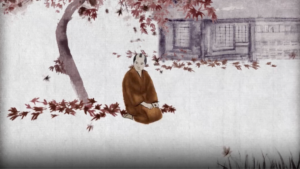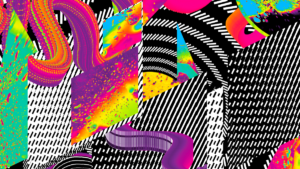
TL;DR
- What is Art Therapy?: Art Therapy is a form of therapeutic practice that uses visual arts, such as painting, drawing, and sculpture, to encourage self-expression and emotional exploration.
- Historical Background: The field of Art Therapy emerged in the mid-20th century, combining the insights of artists, psychologists, and educators who recognized the therapeutic potential of the creative process.
- Benefits of Art Therapy: Art Therapy is effective in reducing stress and anxiety, fostering self-esteem and self-awareness, and aiding in the treatment of trauma, grief, and a variety of mental health conditions.
- Art Therapy in Practice: No artistic skills are required for Art Therapy. It’s about the process of creation, not the end product. Art Therapists provide a supportive environment and help interpret the nonverbal messages that emerge from the art-making process.
- Implementing Art Therapy: Art Therapy can be incorporated into your daily life by choosing an art medium, setting aside time for art creation, and reflecting on the art produced. Professional guidance from certified Art Therapists can further enhance the therapeutic journey.
Introduction
In the thrumming orchestra of life, there are moments of harmony and moments of discord. The undeniable reality is that we all encounter stresses, anxieties, and emotional upheavals. Recent data suggests that nearly one in five U.S. adults live with a mental illness. This alarming statistic alone is enough to underscore the need for solutions and compel us to examine our approaches to mental health.
One method of coping and healing that has gained prominence seems, at first glance, like something out of a kindergarten classroom, but reveals itself as an influential agent of change. Art Therapy employs the creative process to encourage self-exploration, emotional expression, and personal growth. It takes us back to our innate love for creation, taps into the unspoiled recesses of our imaginations, and offers a refreshing new perspective on healing and well-being.
Over the course of this overview, we’re going to pull back the curtain on Art Therapy, which encourages us to pick up paintbrushes and pastels instead of prescriptions. We’ll delve into its intricacies, explore potential benefits, and offer a practical guide on how you can incorporate it into your life.
Understanding Art Therapy
Art Therapy isn’t just about creating pretty pictures — if it’s about that at all. Instead, it uses the creative process to get around language and hit at the heart of self-expression, introspection, and healing.
The practice of Art Therapy was formally established in the mid-20th century, though its roots trace back further. Artists, psychologists, and educators noticed that the act of creating art had transformative effects on individuals, particularly those grappling with emotional distress or trauma.
Art Therapy, in its essence, is the application of visual arts in a therapeutic context. It can take various forms, including painting, drawing, sculpture, collage, and more. The magic of this therapy doesn’t lie in the final product but in expressing feelings and emotions that may be difficult to articulate in words.
Imagine trying to describe the taste of a lemon to someone who’s never tried one — it’s nearly impossible. Similarly, there are emotions and experiences that can be challenging to verbalize. Art Therapy offers a language beyond words, a medium that permits the exploration of such experiences.
Big Fat Important Note I: Art Therapy is not about being a skilled artist. It’s about embracing the process, regardless of the outcome. The aim is not to create a masterpiece but to unravel one’s inner world. It’s about breaking free from the confines of linguistic expression, tapping into the deeper layers of consciousness, and surfacing with a better understanding of oneself.
Art Therapists, the professionals who facilitate this process, are trained in both art and psychology. They create a supportive environment, provide guidance, and help interpret the nonverbal messages and symbols that emerge through art-making.
Benefits of Art Therapy
Art Therapy helps individuals explore, understand, and interpret the complexities of their mental and emotional landscape in profound and meaningful ways.
Firstly, Art Therapy has proven to be highly effective in reducing stress, anxiety, and depression. A study published in the Journal of the American Art Therapy Association found that just 45 minutes of creative activity significantly reduces stress in the body, regardless of artistic experience or talent. Think of it as a mental detox, a way to unburden the mind by channeling thoughts and emotions into a physical form.
Beyond these immediate stress-relieving benefits, Art Therapy can be instrumental in helping individuals deal with more deep-seated, complex issues. It has been successfully employed in the treatment of trauma, grief, loss, and major life changes. By converting internal turmoil into a visual format, individuals can gain a clearer understanding of their feelings, and, in the process, a better handle on their emotional state.
Art Therapy is also proving to be a powerful tool in fostering self-esteem and self-awareness. By creating something tangible, individuals often feel a sense of accomplishment and validation. The art-making process promotes self-expression and self-exploration, helping individuals understand their strengths, weaknesses, desires, and fears.
The beauty of Art Therapy lies in its versatility and accessibility. It can be tailored to suit any age, from children to the elderly, and can be beneficial for a wide range of mental health conditions, including, but not limited to, PTSD, ADHD, autism, dementia, and even in aiding recovery from addiction.
Implementing Art Therapy in Your Daily Life
Having walked through Art Therapy and its benefits, let’s connect this knowledge to action.
Before we delve into the specifics, let’s reiterate the uniqueness of Art Therapy. While traditional therapeutic methods primarily rely on verbal communication, Art Therapy offers a different path — a sensory, tangible means of exploring your mental landscape. This unique aspect makes Art Therapy a compelling addition to your wellness toolkit. It’s an invitation to connect with your feelings and emotions in a way that words often fail to capture.
Big Fat Important Note II: The state of our mental health isn’t something we should postpone attending to. It’s not a book you leave unread on the shelf, hoping to pick it up ‘someday.’ Taking the first steps toward using Art Therapy is something you can — and should — do now.
Here’s a simple, practical guide to help you get started:
Choose Your Artistic Medium
Decide on the art form that you’d like to use. This could be anything — drawing, painting, sculpting, collage making, or digital art. The key is to select something that you feel comfortable with. Remember, it’s not about the outcome, but the process.
Set Aside Time
Dedicate a specific time each day for your art-making process. It could be as little as 30 minutes. The goal is to make it a regular part of your routine.
Create Your Space
Find a quiet, comfortable space where you can work without distractions. This should be a place where you feel free to express yourself.
Let It Flow
Start creating. Don’t worry about what you’re making, whether it looks good, or if it makes sense. Let your feelings guide your hands.
Reflect
Once you’ve finished, spend some time looking at your creation. What do you see? What does it tell you about your feelings? It’s often helpful to keep an art journal where you can jot down these reflections.
Big Fat Important Note III: For those seeking professional guidance, consider reaching out to a certified Art Therapist. They can provide valuable insights into your creations and help guide your therapeutic journey. There are numerous online directories and resources where you can find certified Art Therapists near you.
Conclusion
Art Therapy equips us with a different lens to examine our mental well-being, presenting a fusion of creativity and psychology that offers both solace and insights. We live in a time where our mental health demands attention and care. We cannot afford to ignore its whispers or wait until those whispers become cries.
So, here is your call to action: Grab that sketchbook, those watercolors, or that lump of clay that’s been gathering dust. Start today. Begin that journey of self-expression, introspection, and healing. Let your art speak, listen to it, and discover what it tells you about yourself.
Remember that you’re not alone on this journey. There is a growing community of individuals who have embraced Art Therapy as a tool for mental wellness. Share your journey with them. Learn from them. Let’s foster a culture that emphasizes mental well-being, one that understands the language of colors and shapes, and the healing it can offer.
In this journey of understanding, may you find not only the balm of healing but also the joy of creation, and may that fuel your path forward.
To better understand how real-world artists use art as a therapeutic tool, check out these interviews:
Header artwork credit: Introspection by PsyBot
For updates on all of our editorial features, subscribe to our newsletter below.
- SEO Powered Content & PR Distribution. Get Amplified Today.
- PlatoData.Network Vertical Generative Ai. Empower Yourself. Access Here.
- PlatoAiStream. Web3 Intelligence. Knowledge Amplified. Access Here.
- PlatoESG. Automotive / EVs, Carbon, CleanTech, Energy, Environment, Solar, Waste Management. Access Here.
- BlockOffsets. Modernizing Environmental Offset Ownership. Access Here.
- Source: https://rare.makersplace.com/2023/07/13/unleashing-your-inner-healer-how-to-use-art-therapy-in-your-own-life/?utm_source=rss&utm_medium=rss&utm_campaign=unleashing-your-inner-healer-how-to-use-art-therapy-in-your-own-life
- :has
- :is
- :not
- :where
- $UP
- 2016
- 30
- 9
- a
- About
- accessibility
- Act
- Action
- activity
- addiction
- addition
- ADHD
- adults
- age
- Agent
- aim
- All
- alone
- also
- American
- an
- and
- Anxiety
- any
- anything
- Application
- approaches
- ARE
- around
- Art
- artist
- artistic
- Artists
- Arts
- artwork
- AS
- aspect
- At
- attending
- attention
- Autism
- back
- BE
- Beauty
- become
- been
- begin
- being
- below
- beneficial
- benefits
- Better
- Beyond
- blockchain
- body
- book
- both
- Breaking
- but
- by
- call
- CAN
- cannot
- capture
- care
- Century
- Certified
- challenging
- change
- Changes
- check
- Children
- choosing
- clearer
- combining
- comfortable
- Communication
- community
- compelling
- complex
- complexities
- conditions
- Connect
- Consciousness
- Consider
- context
- converting
- could
- course
- create
- Creating
- creation
- creations
- Creative
- creativity
- Culture
- daily
- data
- day
- deal
- deeper
- demands
- Dementia
- depression
- describe
- detox
- different
- difficult
- digital
- Digital Art
- directories
- discord
- discover
- distress
- do
- does
- Doesn’t
- Dont
- down
- drawing
- Dust
- each
- Editorial
- educators
- Effective
- effects
- Elderly
- embraced
- embracing
- emerge
- emerged
- emotions
- emphasizes
- employed
- employs
- encounter
- encourage
- encourages
- end
- enhance
- enough
- Environment
- essence
- established
- Even
- examine
- experience
- Experiences
- exploration
- explore
- Exploring
- express
- expression
- facilitate
- FAIL
- Fat
- fears
- Features
- feel
- feelings
- field
- final
- Find
- First
- first steps
- five
- For
- form
- Formally
- format
- forms
- Forward
- Foster
- fostering
- found
- Free
- from
- Fuel
- further
- fusion
- Gain
- gained
- gathering
- get
- Glance
- goal
- going
- good
- grab
- Growing
- Growth
- guidance
- guide
- had
- handle
- Hands
- Harmony
- Have
- healing
- Health
- Heart
- help
- helpful
- helping
- helps
- here
- highly
- Hit
- hoping
- How
- How To
- HTTPS
- if
- illness
- imaginations
- immediate
- important
- impossible
- in
- Including
- incorporate
- Incorporated
- individuals
- Influential
- innate
- insights
- instead
- instrumental
- internal
- Interviews
- into
- intricacies
- invitation
- issues
- IT
- ITS
- itself
- Jot
- journal
- journey
- just
- Keep
- Key
- knowledge
- landscape
- language
- layers
- LEARN
- Leave
- Lens
- lie
- lies
- Life
- like
- Limited
- little
- live
- looking
- LOOKS
- loss
- love
- magic
- mailchimp
- major
- make
- MAKES
- Making
- May..
- meaningful
- means
- medium
- mental
- Mental health
- Mental illness
- messages
- method
- methods
- mind
- minutes
- Moments
- more
- Near
- nearly
- Need
- never
- New
- Newsletter
- no
- now
- numerous
- of
- offer
- Offers
- often
- on
- ONE
- online
- only
- or
- our
- out
- Outcome
- overview
- own
- painting
- part
- particularly
- Pastels
- path
- personal
- perspective
- physical
- pick
- Pictures
- Place
- plato
- Plato AiStream
- Plato Data Intelligence
- PlatoAiCast
- PlatoData
- plugin
- potential
- powerful
- Practical
- practice
- Prescriptions
- pretty
- primarily
- process
- Produced
- Product
- professional
- professionals
- profound
- prominence
- promotes
- proven
- provide
- Psychology
- PTSD
- published
- range
- reaching
- real world
- Reality
- recent
- recognized
- recovery
- reduces
- reducing
- Reflections
- Regardless
- regular
- rely
- remember
- required
- Resources
- Reveals
- roots
- s
- see
- seeking
- seems
- Self-Awareness
- sense
- setting
- shapes
- Share
- Shelf
- should
- significantly
- Similarly
- Simple
- skilled
- skills
- Solutions
- some
- Someone
- something
- Space
- speak
- specific
- spend
- start
- started
- State
- Steps
- strengths
- stress
- Study
- subscribe
- Successfully
- such
- Suggests
- Suit
- supportive
- tailored
- Take
- takes
- taking
- Talent
- tapping
- Taps
- taste
- tell
- tells
- that
- The
- The State
- their
- Them
- Therapeutic
- therapist
- therapy
- There.
- These
- they
- think
- this
- those
- though?
- Through
- time
- to
- today
- tool
- toolkit
- toward
- trace
- traditional
- trained
- transformative
- treatment
- tried
- u.s.
- understand
- understanding
- understands
- unique
- uniqueness
- unravel
- until
- Updates
- us
- use
- uses
- using
- validation
- Valuable
- variety
- various
- wait
- walked
- was
- Way..
- ways
- we
- Web3
- Wellness
- What
- whether
- which
- while
- WHO
- wide
- Wide range
- with
- without
- WordPress
- WordPress plugin
- words
- Work
- world
- worry
- you
- Your
- yourself











